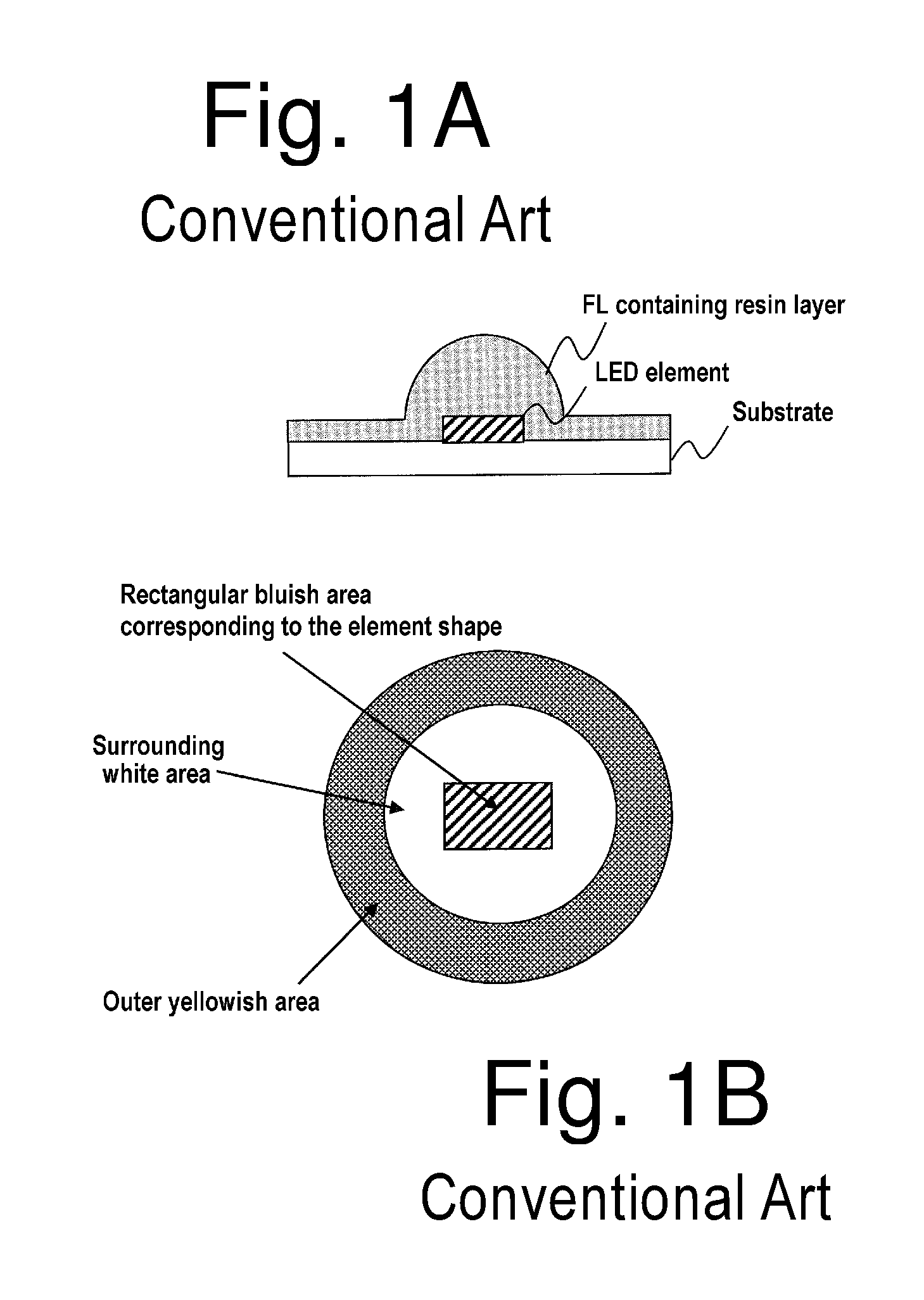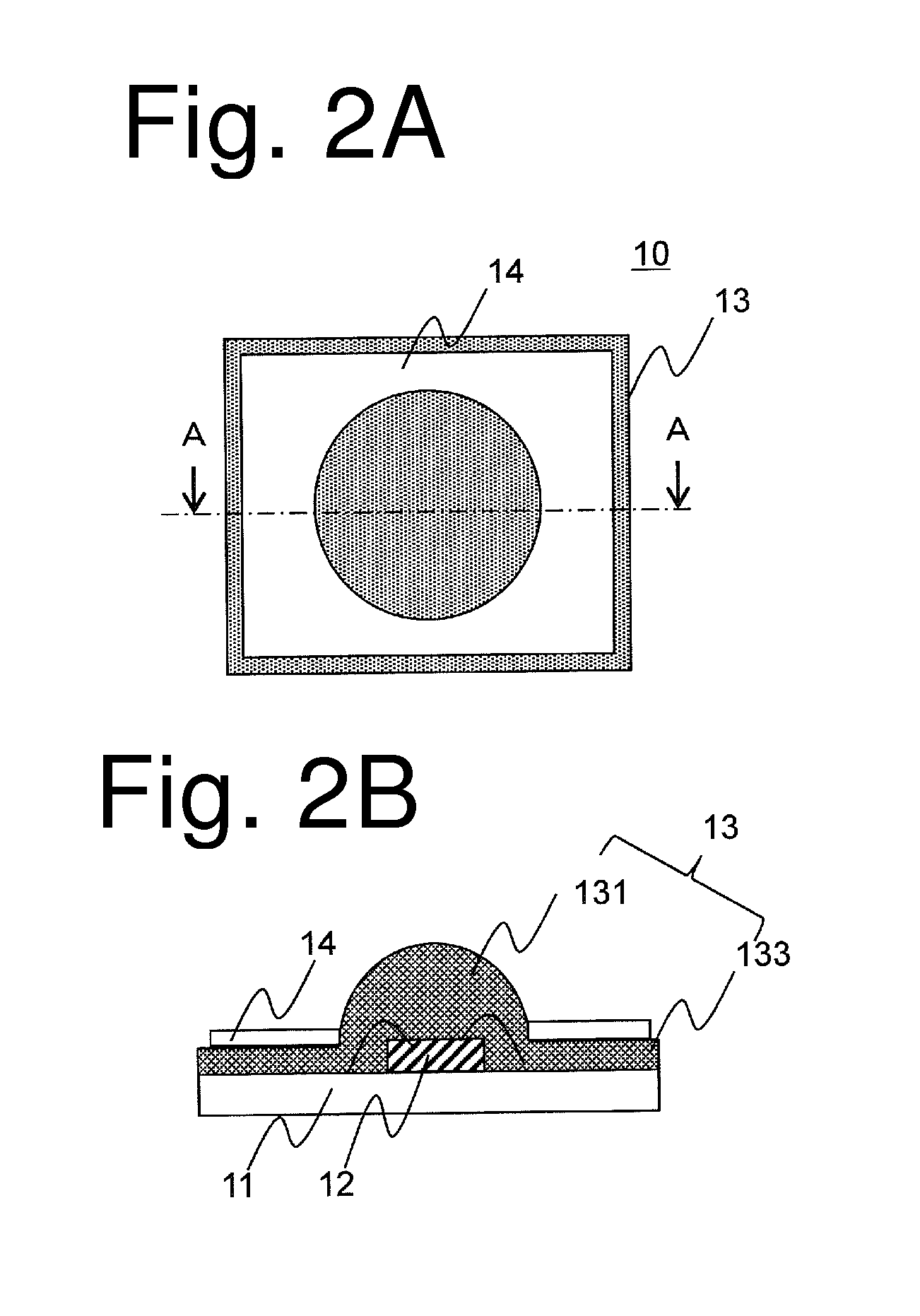Light-emitting device, method for producing the same, and illuminating device
a technology of light-emitting devices and led elements, which is applied in the direction of lighting and heating apparatus, discharge tube luminescnet screens, lighting support devices, etc., can solve the problems of color unevenness at those regions, insufficient effects, and more color unevenness, so as to facilitate the production of reflective portion 14, improve the thixotropic property, and facilitate the coating
- Summary
- Abstract
- Description
- Claims
- Application Information
AI Technical Summary
Benefits of technology
Problems solved by technology
Method used
Image
Examples
examples
[0144]In order to confirm the different and / or advantageous effects of the presently disclosed subject matter, the light-emitting devices with respective structures shown in FIGS. 21A to 21D were produced and the occurrence of the color unevenness was evaluated. FIG. 21A shows the same structure as that of the light-emitting device shown in FIG. 14A (Example 1), in which the substrate 11, reflector 13 and projection portion 15 were formed from a ceramic material and produced in accordance with the fourth exemplary embodiment of the production method. The thickness of the reflector 13 was 0.15 mm, and the width and the height (thickness) of the projection portion 15 were 0.1 mm and 0.05 mm, respectively. The light-emitting device shown in FIG. 21B (Comparative Example 1) was produced in the same manner as in the light-emitting device shown in FIG. 21A, except that the projection portion 15 was not provided to the light-emitting device. The light-emitting device shown in FIG. 21C (Com...
PUM
 Login to View More
Login to View More Abstract
Description
Claims
Application Information
 Login to View More
Login to View More - R&D
- Intellectual Property
- Life Sciences
- Materials
- Tech Scout
- Unparalleled Data Quality
- Higher Quality Content
- 60% Fewer Hallucinations
Browse by: Latest US Patents, China's latest patents, Technical Efficacy Thesaurus, Application Domain, Technology Topic, Popular Technical Reports.
© 2025 PatSnap. All rights reserved.Legal|Privacy policy|Modern Slavery Act Transparency Statement|Sitemap|About US| Contact US: help@patsnap.com



